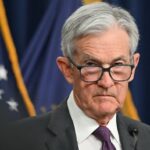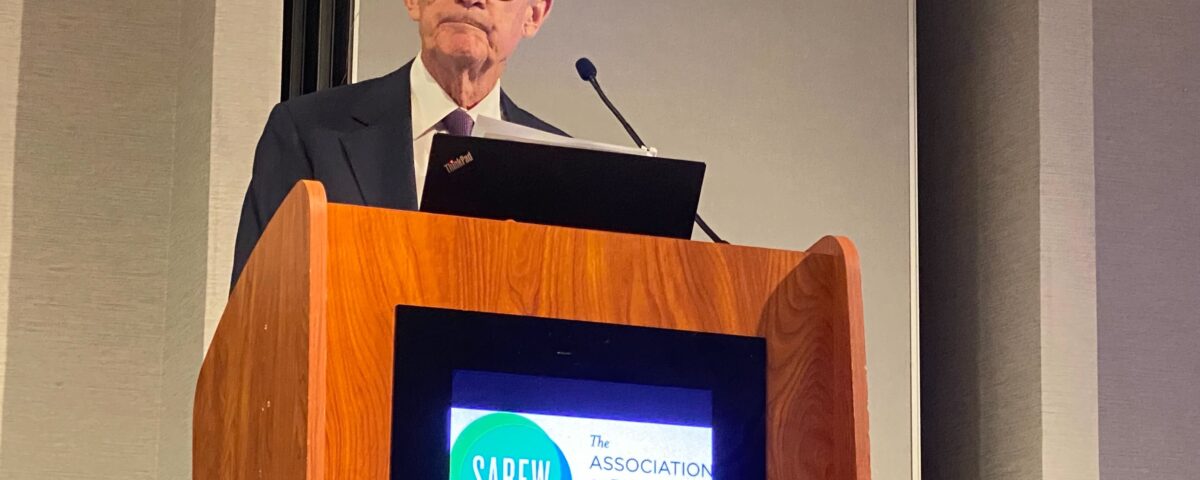CPI and Inflation: Understanding Japan’s Economic Landscape
Tháng 4 16, 2025
Jerome Powell on Tariffs: Navigating Inflation and Growth Challenges
Tháng 4 16, 2025Jerome Powell’s Economic Outlook: Insights from the Economic Club of Chicago Address
On April 16, 2025, Federal Reserve Chair Jerome Powell delivered a compelling address at the Economic Club of Chicago, outlining significant aspects of the U.S. economic landscape and the Federal Reserve’s strategies moving forward. His remarks shed light on the current state of the economy, challenges facing policymakers, and expectations for future economic conditions.
Current Economic Position and Outlook
During his address, Powell emphasized that the U.S. economy remains robust, despite facing certain uncertainties. With the labor market hovering near maximum employment, indicators suggest a solid foundation for growth. However, it is essential to note that while inflation has decreased from its peak, it still surpasses the Federal Reserve’s targeted benchmark of 2%. This dynamic creates a complex environment for monetary policy, as the Fed must navigate the delicate balance between fostering growth and controlling inflation.
Powell’s observations align with the broader economic sentiment, where fluctuations in inflation rates are being closely monitored. The Fed’s dual mandate—ensuring price stability and maximizing employment—remains a guiding principle as it faces evolving economic challenges. For investors looking to navigate these complexities, understanding the importance of value investing is crucial, as discussed in the article on 3 reasons Greenblatt says value investing beats the market.
Policy Considerations and Challenges Ahead
Another focal point of Powell’s speech was the influence of tariffs on the economy. He underscored that these measures could inadvertently ignite higher inflation and stifle economic growth. As the global market reacts to the U.S. trade policy, Powell’s warning resonates with stakeholders concerned about long-term inflation expectations. Maintaining these expectations is crucial to avoiding recurring inflationary pressures, which could derail progress made in stabilizing prices. The discussion on tariffs is especially relevant in light of recent debates surrounding trade policy and its impact, as highlighted in the context of escalating U.S.-China trade tensions. This relates back to a deeper understanding of trade implications mentioned in the article on three strategic moves by China under Xi.
Moreover, Powell refrained from signaling any immediate interest rate cuts. However, he acknowledged that the market is leaning toward anticipating potential reductions later in 2025, particularly in response to declining inflation trends and anticipated slower economic growth. The nuances of interest rate management are paramount as the Federal Reserve seeks to guide the economy through a period of potential volatility.
Trade Policy and Tariff Uncertainty
Tariffs and their repercussions on the U.S. economy were central themes in Powell’s address. With evolving global trade dynamics, investors are acutely aware of the implications tariffs have on inflation and economic expansion. Powell’s comments reaffirm the necessity for clarity in trade policies, as uncertainty in this domain can hinder investor confidence and lead to erratic market responses.
As the Federal Reserve continues to assess these variables, the implications of tariff policies extend beyond immediate economic indicators, shaping expectations for long-term growth and stability. To navigate potential challenges in the investment landscape, avoiding common pitfalls is essential, as elaborated in the article on top investment mistakes to avoid in 2023.
Looking Forward: The Future of the Federal Reserve
With Powell’s term concluding in May 2026, discussions around his potential successors are already underway. His speech offered illuminating insights into the Fed’s operational philosophy during turbulent economic times. The path ahead will require adept management of both internal and external factors impacting inflation and employment rates.
Jerome Powell’s address at the Economic Club of Chicago encapsulated critical considerations for the U.S. economy as it navigates a multifaceted landscape of challenges and opportunities. Stakeholders will undoubtedly be looking for the Federal Reserve’s guidance as it strives to uphold its dual mandate while adapting to an ever-changing economic environment. As inflation trends downwards and growth slows, the decisions made today will shape the trajectory of the U.S. economy for years to come.

